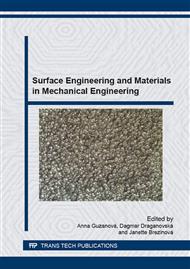p.27
p.32
p.37
p.41
p.45
p.49
p.53
p.57
p.61
Surface Finish Techniques for FDM Parts
Abstract:
Additive manufacturing technologies decrease production time and costs in engineering industry but also in other industries. Parts produced with Fused Deposition Modeling (FDM) have typical low surface finish quality. This paper is aimed on research of surface finishing technologies applicable to improve the quality of FDM prototypes surface finish. Pretreated samples were blasted with sodium bicarbonate and glass beads. The values of Ra and Rz were measured on the samples and compared the impact of selected pre-treatment, blasting medium and blasting conditions on surface finish quality of FDM prototypes.
Info:
Periodical:
Pages:
45-48
Citation:
Online since:
May 2015
Authors:
Keywords:
Price:
Сopyright:
© 2015 Trans Tech Publications Ltd. All Rights Reserved
Share:
Citation:


